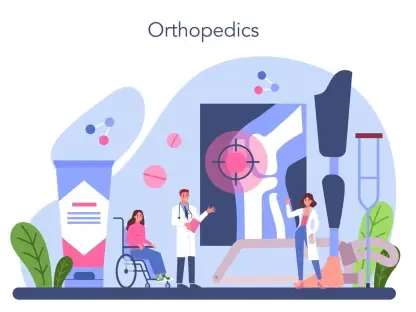Understanding the Health Data Interoperability Landscape
In the complex realm of U.S. healthcare, the seamless exchange of patient data stands as a cornerstone for improving care delivery and outcomes, yet achieving true interoperability remains a persistent challenge with over 80% of hospitals still facing barriers to effective data sharing. This critical need drives innovation and policy, as fragmented systems and inconsistent standards continue to hinder timely access to vital health information. The ability to connect disparate electronic health record (EHR) platforms could transform clinical decision-making, reduce redundancies, and enhance patient safety, setting the stage for a deeper exploration of current efforts and key players in this space.
Major health IT companies like Oracle Health, Epic, and Surescripts play pivotal roles in shaping data-sharing networks, each contributing unique solutions to bridge gaps between providers and systems. Oracle Health, with its expansive technology infrastructure, focuses on integrating vast datasets, while Epic dominates EHR adoption among large health systems, and Surescripts facilitates prescription and clinical data exchange. Their collective influence underscores a competitive yet collaborative environment aimed at overcoming historical silos in healthcare data management.
Federal initiatives, such as the Trusted Exchange Framework and Common Agreement (TEFCA), have emerged as essential mechanisms to standardize data exchange across diverse platforms. Supported by the Department of Health and Human Services, TEFCA establishes governance and technical benchmarks to ensure secure, reliable connectivity. Despite technological advancements in EHR systems and cloud-based solutions, challenges like fragmented infrastructures and varying data formats persist, necessitating robust strategies to align stakeholders and modernize outdated systems for a cohesive national network.
Oracle Health’s QHIN Designation: A Milestone for Connectivity
The Role and Impact of QHIN Status under TEFCA
Oracle Health’s recent designation as a Qualified Health Information Network (QHIN) under TEFCA marks a significant advancement in the push for secure, nationwide health data exchange. This status positions the company as a central facilitator, enabling providers, payers, and government agencies to query and share critical information with unprecedented efficiency. As a QHIN, Oracle Health adheres to strict security and operational standards, ensuring trust and reliability in an increasingly interconnected healthcare landscape.
Since TEFCA became operational, the number of QHINs has grown from five to eleven, reflecting a rapid expansion of the interoperability framework within a short span. This doubling of designated networks signals strong momentum in national efforts to create a unified data-sharing ecosystem. The growth enhances the capacity for cross-network communication, allowing more stakeholders to participate in a system designed to prioritize patient-centered care through accessible, real-time data.
QHINs serve as vital conduits, streamlining the flow of health information across diverse entities and reducing delays that often impact clinical workflows. By acting as trusted intermediaries, these networks enable seamless interactions between disparate systems, ensuring that a physician in one state can access a patient’s records from another without technical hiccups. Oracle Health’s role in this structure amplifies the potential for comprehensive data access, supporting better coordination and informed decision-making across the care continuum.
Strategic Importance for Oracle Health
Achieving QHIN status represents the culmination of Oracle Health’s year-long commitment to advancing health data exchange, highlighting its dedication to addressing interoperability challenges. This milestone is not merely a certification but a testament to the company’s strategic vision in aligning with federal priorities for a connected healthcare system. By meeting rigorous onboarding and compliance requirements, Oracle Health demonstrates readiness to lead in transforming how data moves within the industry.
This designation also complements Oracle Health’s involvement in parallel initiatives, such as the CMS Health Tech Ecosystem, which promotes voluntary data-sharing standards and digital tool access. Participation in multiple programs showcases a comprehensive approach, positioning the company as a versatile player capable of navigating complex interoperability demands. Such alignment with broader health IT goals strengthens Oracle Health’s influence among competitors and collaborators alike.
Early outcomes of Oracle Health’s QHIN role suggest promising impacts, as seen in recent industry collaborations that leverage enhanced data-sharing capabilities for improved patient outcomes. For instance, partnerships mirroring Humana and Epic’s innovations in coverage verification and check-in processes hint at the practical benefits of expanded connectivity. These developments indicate that Oracle Health’s contributions could catalyze tangible improvements in operational efficiency and care quality for diverse healthcare stakeholders.
Challenges in Achieving Seamless Health Data Exchange
Despite progress, persistent barriers to interoperability loom large, with fragmented systems across hospitals and clinics creating significant roadblocks to unified data access. Many healthcare organizations operate on incompatible platforms, leading to inefficiencies and errors in patient record management. These systemic divides, compounded by inconsistent data standards, underscore the complexity of achieving a fully integrated health information network.
Initiatives like TEFCA and the CMS Health Tech Ecosystem face their own set of hurdles, including high compliance standards and ambiguous implementation guidelines that can stall progress. Ambitious timelines, with expected results in some programs by early 2026, add pressure to stakeholders already grappling with resource constraints. The lack of clarity in operational details often leaves vendors and providers struggling to align with federal expectations, slowing the pace of adoption.
Overcoming these obstacles demands enhanced collaboration among health IT vendors, providers, and regulators to establish clearer pathways for integration. Investments in secure, scalable technology solutions, such as advanced encryption and standardized protocols, could address security concerns while fostering compatibility. Additionally, incentivizing smaller organizations to modernize their systems through funding or technical support may help close gaps in the interoperability landscape, paving the way for broader connectivity.
Regulatory Framework and Compliance in Health Data Sharing
TEFCA stands as a cornerstone of federal efforts to define technical and governance standards for health data exchange, ensuring that participants operate within a framework of security and trust. By setting clear rules for data handling and network participation, this initiative fosters accountability among QHINs and other entities. Such oversight is critical to maintaining the integrity of sensitive health information as it traverses multiple systems.
Broader government programs, like the CMS Health Tech Ecosystem, complement TEFCA by encouraging voluntary adoption of data-sharing practices and expanding access to digital health resources. These efforts aim to empower providers with tools that enhance patient engagement and streamline administrative processes. The synergy between various federal policies creates a supportive environment for innovation, even as it imposes stringent requirements on participants to safeguard data privacy.
Compliance with federal regulations remains paramount, as breaches in health data security can erode public confidence and disrupt care delivery. Robust measures, including encryption and regular audits, are essential to protect patient information within an interconnected ecosystem. As networks expand, balancing accessibility with stringent safeguards will be crucial to sustaining trust and ensuring that regulatory frameworks adapt to evolving technological and operational needs.
Future Outlook for Health Data Interoperability
With the increasing number of QHINs and sustained government backing through frameworks like TEFCA, the trajectory of health data sharing appears poised for significant advancement over the next few years. Projections suggest that continued growth in network participation could connect a majority of U.S. healthcare providers by 2027, dramatically reducing data silos. This momentum offers a glimpse into a future where real-time information access becomes the norm rather than the exception.
Emerging trends, such as enhanced EHR interoperability and AI-driven data analytics, are set to further revolutionize the field, enabling predictive insights and personalized care at scale. Collaborations among health IT leaders like Oracle Health and Epic point to a maturing ecosystem where shared standards and joint projects drive innovation. These developments, coupled with cloud-based solutions, promise to tackle longstanding inefficiencies in data exchange.
Global healthcare trends, including regulatory shifts and economic pressures, will also shape the interoperability landscape, potentially accelerating the adoption of universal standards. Economic incentives for digital transformation and international benchmarks for data security could spur domestic progress. Oracle Health, with its growing influence, stands to play a pivotal role in navigating these dynamics, fostering areas for disruption through scalable, secure technologies that align with worldwide best practices.
Conclusion: The Path Forward for Oracle Health and Interoperability
Reflecting on Oracle Health’s journey to QHIN status, it becomes evident that this achievement marks a turning point in dismantling data silos across the U.S. healthcare system. The expansion of TEFCA’s network underscores a collective resolve to enhance connectivity, even as challenges like fragmented systems linger. This milestone illuminates both the strides taken and the persistent gaps that demand attention.
Looking ahead, stakeholders need to prioritize actionable strategies, such as forging stronger partnerships to harmonize data standards and investing in cutting-edge security protocols to protect patient information. Oracle Health, alongside other industry leaders, has the opportunity to spearhead pilot programs that test innovative integration models, setting benchmarks for smaller entities. These steps could ensure that the vision of a fully connected healthcare ecosystem moves closer to reality.
Beyond immediate actions, a sustained focus on adapting to regulatory changes and leveraging AI for data optimization emerges as a critical consideration. Encouraging smaller providers to join interoperability networks through incentives or technical assistance also stands out as a necessary effort to bridge disparities. By championing these initiatives, Oracle Health could solidify its legacy as a transformative force in health IT, guiding the industry toward a more integrated and responsive future.









